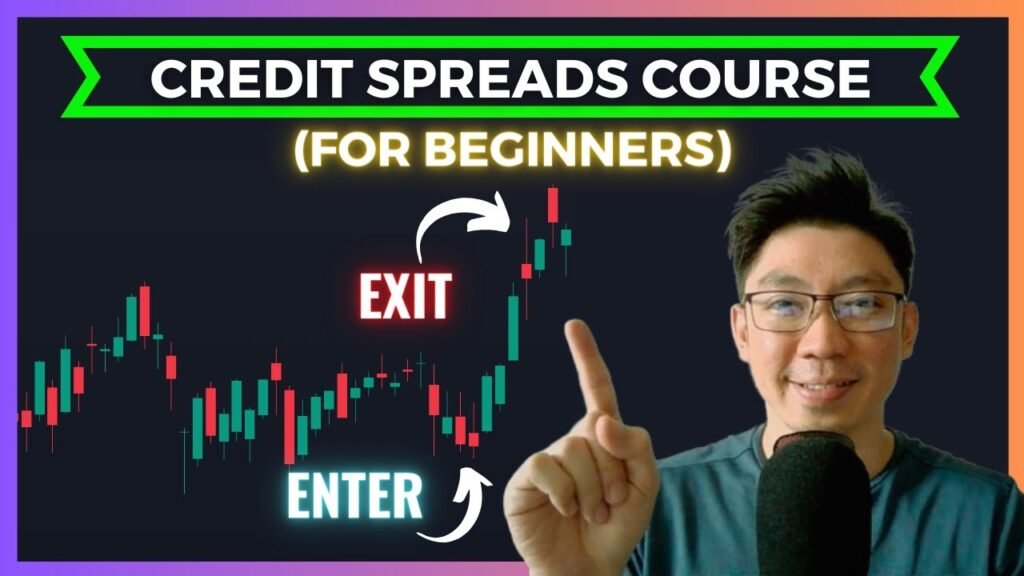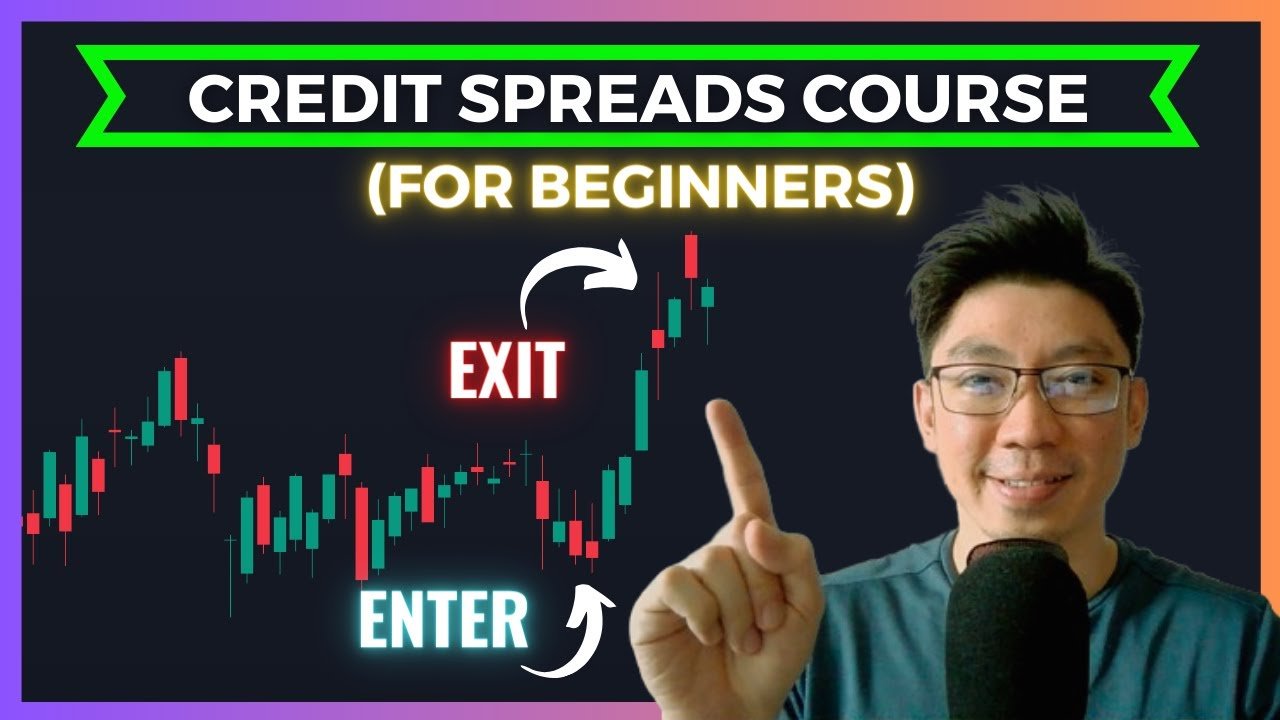Alright, so in today’s video, I have the “ULTIMATE Credit Spread Trading Guide (Beginner to Pro in 1 Hour)” for you. Whether you’re new to trading options or just starting out with credit spreads, this guide is designed to take you from a beginner to a pro in no time. We’ll cover everything you need to know, from the basics of credit spreads to entering and exiting trades, as well as managing losing positions effectively. You can expect valuable insights, strategies, and comprehensive knowledge on getting started with credit spreads in under 1 hour. Plus, you’ll also get additional resources like The Options Income Blueprint for free. So grab a pen and paper, get ready to take some notes, and let’s dive into the world of credit spread trading together!
In this guide, we’ll discuss different scenarios in credit spread trading. For example, if the market tests your short strike and you’re near breakeven, you can choose to hold the trade and let Theta decay work in your favor. Alternatively, if you’re uncomfortable with the market testing your short strike, you can roll the trade by closing your current position and opening a new one at a later expiration and/or different strikes. You can also choose to close the trade and take your profit or loss if you lack confidence in the position. Additionally, adjusting the trade by adding another leg or changing the strikes is another option to potentially improve your position. Ultimately, it’s important to evaluate your risk tolerance, market outlook, and trading plan when deciding how to manage a losing credit spread.
Scenario Analysis in Credit Spread Trading
In credit spread trading, there are various scenarios that traders may encounter. Each scenario requires careful evaluation and decision-making to manage the trade effectively. This article will explore the different scenarios and provide insights on how to navigate them to maximize profitability and minimize risks.
Scenario One: Holding the Trade
In this scenario, the trade is still far from the 21-day-to-expiration (DTE) mark. If the market has tested your short strike but you are near breakeven, it is advisable to hold the trade and let Theta decay work in your favor. Theta decay refers to the diminishing time value of options as they approach expiration, which can lead to profit for credit spread traders.
By holding the trade, you give yourself more time for the trade to reach maximum profitability. This scenario requires patience and trust in the strategy. However, it is essential to consistently monitor the market conditions and reassess the trade if necessary.
Scenario Two: Rolling or Closing the Trade
In scenario two, the market goes down and tests the short strike. In this case, you have two options: rolling or closing the trade.
Rolling the trade involves closing your current position and opening a new position at a later expiration and/or different strikes. Rolling allows you to extend your position and potentially gain more time for the market to move in your favor. However, it is important to note that rolling may result in a lower win rate compared to closing the trade.
Whether you choose to roll or close the trade depends on your risk tolerance and trading approach. A mechanical approach based on set rules or a gut feeling can both be valid reasons for making the decision. It is crucial to stick to your trading plan and not let emotions dictate your actions.
Scenario Three: Closing the Trade
If the market has tested your short strike and you lack confidence in the position, it may be wise to close the trade and take your profit or loss. Closing the trade allows you to exit the position and protect your capital.
While closing the trade may result in a loss, it is essential to focus on long-term statistics and the ability to manage losses. By closing losing trades promptly, you can prevent further losses and allocate your capital to more profitable opportunities. Remember, it is better to cut your losses early and move on to the next trade.
Scenario Four: Holding the Trade
In scenario four, there are still 30 DTE left, and the trade has not reached the threshold for take profit or 21 DTE. In this situation, it is suggested to hold the trade and let it develop further.
Holding the trade allows you to benefit from Theta decay and potentially reach your profit target. However, it is crucial to monitor the market conditions and adjust your strategy if necessary. Setting stop-loss orders or implementing risk management techniques can help protect your position in case the market moves against you.
Scenario Five: Closing the Trade
In scenario five, there are 21 DTE left, and the market is still below the long put strike. Based on long-term statistics and the ability to manage losses, it is advisable to close the trade in this scenario.
While there may be an argument for holding the trade if it is already deep in the money and there is not much left to lose, it is essential to consider the heightened risk of exercise on the short put. It is crucial to weigh the potential benefits against the risks and make an informed decision.
Scenario Six: Holding the Trade
In scenario six, the trade is still active, and the market has not yet reached the point of concern. In this situation, it is recommended to hold the trade and continue monitoring the market conditions.
By holding the trade, you provide yourself with an opportunity for profitability. However, it is essential to remain vigilant and ready to take action if the market conditions change significantly. Regularly reviewing your trading plan and adjusting your strategy accordingly will help you navigate this scenario effectively.
Scenario Seven: Closing the Trade
If the market has tested your short strike and is approaching your stop-loss level, it may be wise to close the trade in scenario seven. Closing the trade allows you to minimize potential losses and move on to the next opportunity.
While it is never easy to accept a loss, it is an integral part of trading. By adhering to your risk management plan and closing losing trades promptly, you can preserve your capital and maintain a disciplined trading approach.
Scenario Eight: Reversing the Trade
In scenario eight, the option to reverse the trade is discussed. If there is exercise on the short put, reversing the trade can help minimize losses and potentially turn a losing trade into a profitable one.
Reversing the trade involves closing the existing position and opening a new position in the opposite direction. This strategy allows traders to take advantage of market movements and adjust their positions accordingly. However, it is crucial to thoroughly analyze the market conditions and consider the potential risks before implementing a reversal strategy.
Scenario Nine: Comprehensive Credit Spread Trading Guide
To gain a comprehensive understanding of credit spread trading, it is recommended to refer to a comprehensive trading guide like the ULTIMATE Credit Spread Trading Guide by Options with Davis. This guide provides valuable insights and strategies for profitable credit spread trading, from beginners to professionals.
The guide covers topics such as what credit spreads are, why you should trade credit spreads, how to enter and exit credit spreads, and most importantly, how to manage losing credit spreads. By studying this guide, traders can enhance their knowledge and skills in credit spread trading, positioning themselves for success in the market.
Scenario Ten: Encouraging Success Stories
As traders continue to develop their skills and gain experience in credit spread trading, success stories become a source of inspiration and motivation. Options with Davis encourages traders to share their success stories and achievements in credit spread trading.
By sharing success stories, traders can inspire others and demonstrate the potential profitability of credit spread trading. Success stories also serve as a reminder that with dedication, disciplined trading, and continuous learning, traders can achieve their financial goals through credit spread trading.

Conclusion
Credit spread trading entails navigating various scenarios and making informed decisions to manage trades effectively. Whether it’s holding the trade, rolling or closing the trade, or reversing the position, each scenario requires careful evaluation and consideration of risk tolerance and trading strategies.
By referring to comprehensive trading guides and continuously improving knowledge and skills, traders can enhance their performance and increase profitability in credit spread trading. Additionally, sharing success stories can inspire and motivate fellow traders, creating a supportive community that celebrates achievements and encourages growth.
Credit spread trading can be a rewarding endeavor when approached with discipline, patience, and a thorough understanding of market dynamics. By following the strategies outlined in this article and staying committed to continuous learning, traders can enhance their credit spread trading experience and increase their chances of success in the market.
